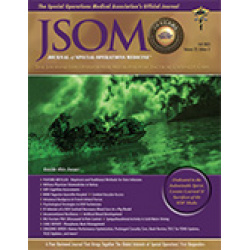Mobility Solutions After a Lower Extremity Fracture and Applicability to Battlefield and Wilderness Medicine
Childers W, Alderete JF, Eliason TD, Goldman SM, Nicolella DP, Pierrie SN, Stark GE, Studer NM, Wenke JC, Wilson JB, Dearth CL 23(3). 91 (Journal Article)
The potential for delayed evacuation of injured Service members from austere environments highlights the need to develop solutions that can stabilize a wound and enable mobility during these prolonged casualty care (PCC) scenarios. Lower extremity fractures have traditionally been treated by immobilization (splinting) followed by air evacuation - a paradigm not practical in PCC scenarios. In the civilian sector, treatment of extremity injuries sustained during remote recreational activities have similar challenges, particularly when adverse weather or terrain precludes early ground or air rescue. This review examines currently available fracture treatment solutions to include splinting, orthotic devices, and biological interventions and evaluates their feasibility: 1) for prolonged use in austere environments and 2) to enable patient mobilization. This review returned three common types of splints to include: a simple box splint, pneumatic splints, and traction splints. None of these splinting techniques allowed for ambulation. However, fixed facility-based orthotic interventions that include weight-bearing features may be combined with common splinting techniques to improve mobility. Biologically-focused technologies to stabilize a long bone fracture are still in their infancy. Integrating design features across these technologies could generate advanced treatments which would enable mobility, thus maximizing survivability until patient evacuation is feasible.


 Español
Español 



